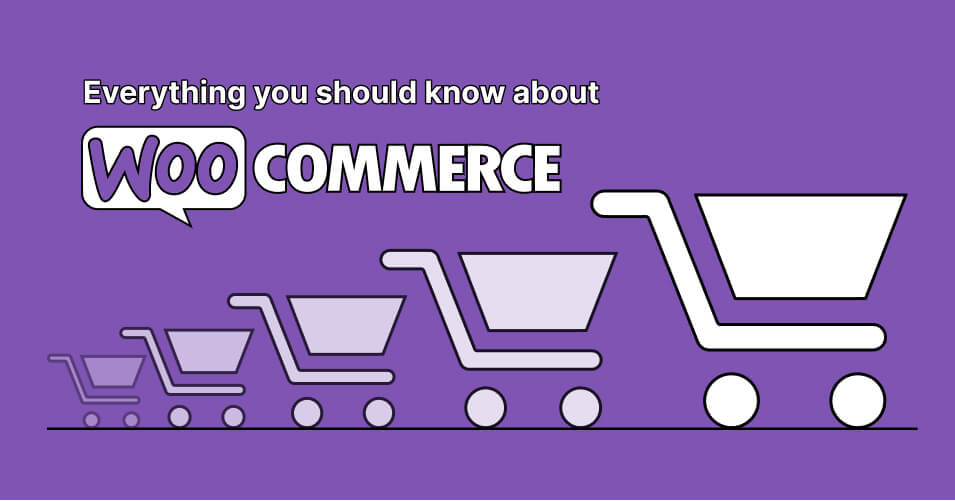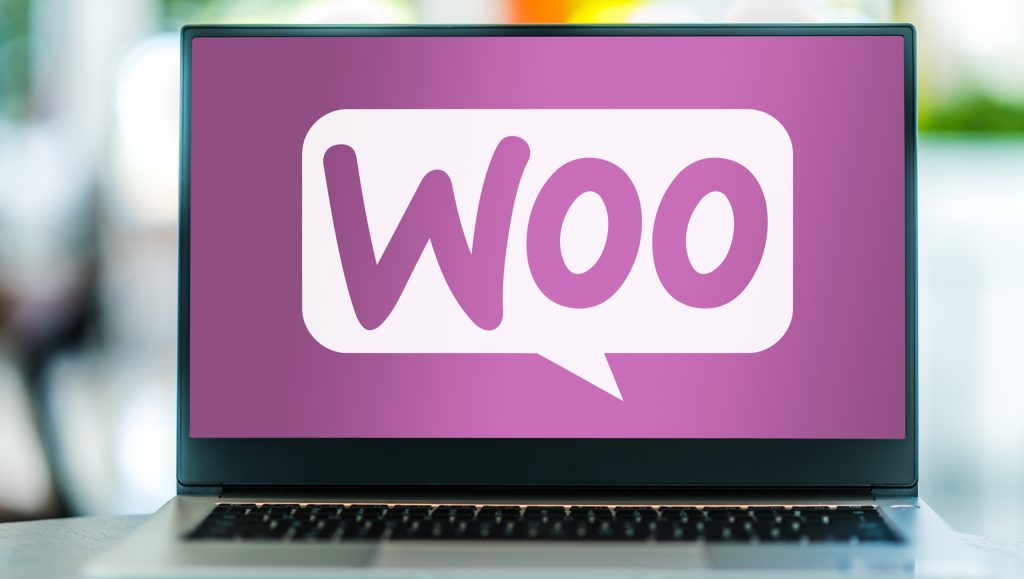What is WooCommerce Development?
WooCommerce development refers to the process of building, customizing, and optimizing online stores using the WooCommerce plugin for WordPress. It involves tasks such as:
- Setting up a basic WooCommerce store.
- Developing custom themes and templates.
- Creating or modifying plugins to add specific functionalities.
- Enhancing performance, security, and SEO for better user experience and visibility.
WooCommerce development is versatile, enabling businesses to create stores for physical goods, digital products, memberships, subscriptions, or even services.
Why Choose WooCommerce for eCommerce Development?
1. Cost-Effective Solution
WooCommerce is free to install, and its open-source nature allows for endless customization without significant licensing fees. Even with additional costs for premium themes, plugins, and hosting, it remains an affordable option.
2. Integration with WordPress
Built as a WordPress plugin, WooCommerce seamlessly integrates with the world’s most popular CMS. This allows you to manage your store and content from a single dashboard.
3. Scalability
Whether you’re starting small or planning for large-scale operations, WooCommerce scales to meet your needs. Its robust architecture can handle a growing inventory and traffic.
4. Extensive Customization
With thousands of themes, plugins, and developer tools, WooCommerce development offers endless possibilities for customization. From unique storefront designs to advanced functionality, you can tailor your store to your exact requirements.
5. Community Support
WooCommerce boasts a massive community of developers and users, ensuring ample resources, tutorials, and forums to help you troubleshoot and innovate.
Steps to Start WooCommerce Development
1. Choose a Hosting Provider
Selecting the right hosting provider is critical for performance and reliability. Look for WooCommerce-optimized hosting services like Bluehost, SiteGround, or Kinsta. Key factors to consider include:
- Uptime guarantees.
- Fast servers with SSD storage.
- Support for PHP 7.4 or higher.
2. Install WordPress and WooCommerce
After setting up your hosting, install WordPress and then add WooCommerce through the plugin directory. Use the WooCommerce setup wizard to configure essential settings like currency, payment gateways, and shipping zones.
3. Select and Customize a Theme
WooCommerce works with most WordPress themes, but for better performance and design compatibility, choose a WooCommerce-specific theme like Storefront or a premium option from ThemeForest. Customization options include:
- Editing colors, fonts, and layouts using the WordPress Customizer.
- Modifying theme templates with child themes for advanced changes.
4. Add Products
Start populating your store by adding products. Navigate to Products > Add New, then:
- Write product descriptions optimized for SEO.
- Upload high-quality images.
- Set prices, categories, and tags.
For variable products (e.g., different sizes or colors), use the Attributes and Variations options.
5. Extend Functionality with Plugins
WooCommerce development relies heavily on plugins to extend its features. Must-have plugins include:
- Yoast SEO: For search engine optimization.
- WooCommerce Subscriptions: For recurring billing.
- CartFlows: For creating sales funnels.
- Advanced Coupons: For managing promotions.
6. Optimize for Performance
Slow websites lose customers. Use these strategies to optimize your WooCommerce store:
- Implement caching with plugins like WP Rocket.
- Compress images using Smush or ShortPixel.
- Minify CSS, JavaScript, and HTML files.
Custom WooCommerce Development
While WooCommerce provides out-of-the-box solutions, custom development takes your store to the next level. Here’s how:
1. Custom Themes
Designing a unique theme helps differentiate your store from competitors. Use these approaches:
- Build a child theme to modify an existing theme without affecting updates.
- Develop a custom theme from scratch using PHP, CSS, and JavaScript.
2. Custom Plugins
Custom plugins address specific business needs not covered by existing solutions. For example, you might need a plugin to integrate your store with a proprietary CRM or to create dynamic pricing rules.
3. Custom Checkout Process
Streamlining the checkout process improves conversions. You can:
- Use hooks and filters to customize the checkout form.
- Simplify the flow by removing unnecessary fields.
4. Integrating APIs
APIs allow your WooCommerce store to interact with external systems like payment gateways, shipping carriers, or marketing platforms. WooCommerce’s REST API provides developers with extensive integration capabilities.
WooCommerce Development Best Practices
1. Follow Coding Standards
Adhere to WordPress coding standards to ensure compatibility and maintainability.
2. Test on Staging Environments
Before deploying changes, test them on a staging site to avoid disrupting the live store.
3. Prioritize Security
Enhance security by:
- Using strong admin credentials.
- Regularly updating WooCommerce, themes, and plugins.
- Installing security plugins like Wordfence.
Advanced WooCommerce Development Techniques
1. Multilingual Stores
To reach a global audience, create a multilingual store using plugins like WPML or Polylang. Ensure product descriptions and checkout processes are translated accurately.
2. Subscription Models
Recurring revenue models are increasingly popular. Use plugins like WooCommerce Subscriptions to offer memberships or subscription-based products.
3. AI and Personalization
Incorporate AI-powered tools to provide personalized shopping experiences:
- Product recommendations based on user behavior.
- Chatbots for customer support.
4. Headless WooCommerce
Decouple WooCommerce’s frontend and backend for faster, more dynamic stores. Use frameworks like React or Vue.js for the frontend while WooCommerce handles the backend.
WooCommerce Development for SEO
1. Keyword Optimization
Research and integrate relevant keywords like “WooCommerce development” into product titles, descriptions, and meta tags.
2. Optimize URLs
Use clean, descriptive URLs for products and categories.
3. Schema Markup
Add structured data to enhance search engine visibility. WooCommerce SEO plugins like Rank Math can simplify this process.
Scaling Your WooCommerce Store
As your store grows, ensure it can handle increased traffic and sales:
- Upgrade to a hosting provider with scalable resources.
- Implement load balancers to distribute traffic.
- Optimize database performance with tools like WP-Optimize.
Common WooCommerce Development Challenges and Solutions
1. Slow Loading Times
Solution: Use a lightweight theme, enable caching, and optimize images.
2. Payment Gateway Errors
Solution: Ensure payment gateways are correctly configured and updated.
3. Mobile Responsiveness Issues
Solution: Use responsive themes and test your store on various devices.
Future Trends in WooCommerce Development
The eCommerce landscape is constantly evolving. Stay ahead with these trends:
1. Voice Commerce
Optimize your store for voice search queries to cater to smart speaker users.
2. Augmented Reality (AR)
Integrate AR features for product previews, particularly for fashion and furniture stores.
3. AI-Driven Analytics
Use AI tools to analyze customer behavior and optimize marketing strategies.
Conclusion
WooCommerce development empowers businesses to create tailored eCommerce solutions that drive sales and enhance customer experiences. By mastering the fundamentals, embracing advanced customization, and staying updated with trends, you can build a WooCommerce store that thrives in today’s competitive market.
Start your WooCommerce development journey today and unlock the full potential of your online store!
Expanding Your Knowledge of WooCommerce Development
In this extended guide, we delve deeper into the nuances of WooCommerce development. Whether you’re scaling your business, improving user experience, or incorporating innovative technologies, these advanced strategies will enhance your WooCommerce development skills.
Advanced Features in WooCommerce Development
1. Customizing the WooCommerce Dashboard
The WooCommerce admin dashboard provides critical data for managing your store. However, it might not display all the information you need. By customizing the dashboard, you can streamline workflows and prioritize essential metrics. Here’s how:
- Using Hooks and Filters: WooCommerce offers hooks and filters for developers to modify dashboard elements. For instance, you can add custom sales reports or reorder sections.
- Third-Party Plugins: Tools like WooCommerce Admin or Metorik offer enhanced analytics and reporting capabilities.
2. Custom Shipping and Payment Options
Customizing shipping and payment options is crucial for providing a seamless shopping experience.
a. Advanced Shipping Rules
- Use conditional logic to create rules for shipping rates based on product weight, location, or quantity.
- Integrate with shipping carriers like FedEx, DHL, or UPS using APIs or plugins.
b. Custom Payment Gateways
If your store serves a region with specific payment preferences, you may need to integrate local gateways. Developers can build custom payment gateway plugins using WooCommerce’s Payment Gateway API.
3. Automating WooCommerce Processes
Automation can save time and reduce errors in managing your WooCommerce store.
- Inventory Management: Use plugins like ATUM Inventory Management to automate stock updates and reorder processes.
- Order Fulfillment: Integrate with tools like ShipStation to automate shipping label creation and tracking.
- Email Marketing: Automate abandoned cart emails or product recommendations using tools like Mailchimp for WooCommerce.
4. Building a Marketplace with WooCommerce
Turn your WooCommerce store into a multi-vendor marketplace by integrating plugins like Dokan, WC Vendors, or YITH WooCommerce Multi Vendor. Features include:
- Vendor dashboards for managing their products and orders.
- Revenue sharing and commission tracking.
- Vendor-specific shipping options.
A WooCommerce-based marketplace is scalable and cost-effective compared to standalone marketplace platforms.
5. WooCommerce and AI Integration
Artificial Intelligence (AI) is transforming eCommerce by improving customer experiences and operational efficiency. Here’s how you can integrate AI into WooCommerce development:
- AI Chatbots: Use tools like Tidio or Zendesk to provide 24/7 customer support.
- Personalized Recommendations: Integrate AI-powered recommendation engines to display products based on customer behavior.
- Dynamic Pricing: Use AI algorithms to adjust prices based on demand, competition, or customer segments.
6. Advanced Product Page Customization
A well-designed product page can significantly boost conversions.
a. Enhanced Visuals
- Use 360-degree product view plugins to allow customers to see products from all angles.
- Integrate AR/VR technologies for a more immersive shopping experience.
b. Interactive Elements
- Add live chat features to answer customer questions in real-time.
- Include dynamic product FAQs that update based on user queries.
WooCommerce Development for Mobile Commerce
Mobile commerce (mCommerce) is a growing trend, with mobile devices accounting for a significant portion of eCommerce traffic. Here’s how to optimize your WooCommerce store for mobile:
1. Responsive Design
Ensure your store adapts seamlessly to different screen sizes. Use a responsive theme or frameworks like Bootstrap for custom designs.
2. Progressive Web Apps (PWAs)
Convert your WooCommerce store into a PWA to offer app-like features, such as offline access and push notifications. Plugins like PWA for WP & AMP simplify the process.
3. Mobile Payment Gateways
Integrate mobile-friendly payment methods like Apple Pay, Google Pay, or local wallets for a smoother checkout experience.
Improving WooCommerce Performance for Large-Scale Stores
As your store grows, maintaining high performance becomes critical to ensure a seamless user experience.
1. Database Optimization
Large WooCommerce stores can experience database bloat. Use tools like WP-Optimize to clean up transients, post revisions, and spam comments.
2. Content Delivery Network (CDN)
A CDN caches your website’s assets on servers worldwide, reducing load times for users far from your hosting server. Popular CDN services include Cloudflare, KeyCDN, and Amazon CloudFront.
3. Image Optimization
High-quality images are essential for product pages but can slow down your store. Use plugins like ShortPixel or Imagify to compress images without losing quality.
4. Load Testing
Conduct load testing to understand how your site performs under traffic surges. Tools like Loader.io or Apache JMeter simulate user activity and identify bottlenecks.
5. Scaling Infrastructure
Upgrade your hosting plan to a dedicated server or cloud solution for better performance. Managed WooCommerce hosting providers like WP Engine and Liquid Web offer scalable solutions with optimized configurations.
WooCommerce Development for International Markets
Expanding your WooCommerce store to global markets involves overcoming challenges related to language, currency, and legal compliance.
1. Multilingual Support
Use plugins like WPML or Polylang to translate your store into multiple languages. Ensure translations are accurate and culturally appropriate.
2. Multi-Currency Support
Enable customers to view prices and pay in their local currencies. WooCommerce Currency Switcher is a popular plugin for this purpose.
3. Compliance with Regional Laws
- Ensure GDPR compliance for European markets.
- Adhere to tax regulations using plugins like TaxJar or Avalara.
- Provide region-specific shipping and return policies.
Innovative Trends in WooCommerce Development
1. Blockchain and Cryptocurrency Payments
Enable cryptocurrency payments by integrating blockchain technology. Plugins like Cryptocurrency Payment Gateway for WooCommerce simplify this process.
2. Voice Search Optimization
Optimize your WooCommerce store for voice searches by:
- Using conversational keywords.
- Including FAQ sections that align with voice queries.
3. Green Commerce Initiatives
Consumers increasingly favor eco-friendly businesses. Highlight your store’s sustainability efforts, and consider carbon-neutral shipping options.
4. Social Commerce Integration
Connect your WooCommerce store with social media platforms for seamless shopping experiences. WooCommerce supports Facebook Shops, Instagram Shopping, and Pinterest Buyable Pins.
Measuring Success in WooCommerce Development
Tracking performance metrics ensures your WooCommerce development efforts yield results.
1. Key Metrics
Monitor these metrics regularly:
- Conversion rates.
- Average order value (AOV).
- Cart abandonment rate.
- Customer lifetime value (CLV).
2. Analytics Tools
Use tools like Google Analytics and WooCommerce Analytics to gain insights into customer behavior and optimize accordingly.
Conclusion
WooCommerce development offers unparalleled flexibility for creating dynamic, scalable, and feature-rich online stores. From customizing themes and building plugins to incorporating cutting-edge technologies like AI and blockchain, the possibilities are vast. By mastering the techniques outlined in this guide and staying abreast of eCommerce trends, you can build a WooCommerce store that stands out in a competitive market.
Start leveraging the power of WooCommerce development today and transform your vision into a thriving online business.




WooCommerce Development: 10 Best Steps to Building an Online Store – ECA Technologies Inc.
[…] WooCommerce Development: 10 Best Steps to Building an Online Store published first on https://www.ecatechnologies.com/ […]